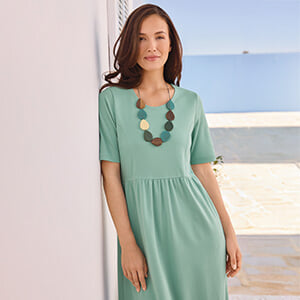In celebration of this year’s wool week, we wanted to honour one of our most timeless layering staples traditionally made from wool, the modest cardigan.
It’s a simple go-to for a stylish layered look through the colder seasons and is distinguished by its button detail and traditional wool fabric. Although there are many alternate fabrics (many of which are mass-produced) creating an array of designs, patterns and shapes, a woollen cardigan is an investment piece that truly proves its worth.
But where did it originate? The cardigan was named after James Brudenell, 7th Earl of Cardigan, a British Army Major General who is renowned for leading the Charge of the Light Brigade in 1854. A battle that was immortalised by the famous namesake poem written by Lord Alfred Tennyson. It is believed that Lord Brudenell created the cardigan for his troops to wear due to the garment functionality as well as style.
Traditionally made of wool, like most clothing of the period, the cardigan was practical in its insulation and breathability. As wool is able to react to fluctuations in your body temperature from the tiny pockets of air within its fibres it can circulate heat, meaning that wool will keep you warm when your body is cold, and cool when it’s hot. This unique ability is the reason wool is still a popular material in modern fashion and makes the cardigan a perfect accessory to a summer dress as well as a stylish winter layer.
Lord Brudenell returned home before his troops and before news of the doomed battle. He enjoyed a hero’s welcome including a reception by Queen Victoria at Buckingham Palace. During this short-lived fame, Cardigan’s garment of the same name rose in popularity. After Lord Brudenell’s swift fall from grace, the cardigan began being commercially produced and worn across the country for its versatility, practicality and association with high society.
However, it wasn’t until the iconic and influential Coco Chanel established herself in the world of fashion that cardigans became popular for women. Chanel is famously quoted on her regeneration of the cardigan because "she hated how tight-necked men's sweaters messed up her hair when she pulled them over her head”.
Chanel propelled the cardigan to the epicentre of style associating it with the college culture of the Roaring Twenties and early 1930’s across Europe. However, it wasn’t until the 1950’s that Chanel’s cardigans gained traction in the United States, fitting well with America’s emerging women’s liberation and appealing to the sense of egalitarianism.
Since then, the cardigan has sustained its popularity through the decades, basking in the spotlight of silver-screen success with glamourous wearers like Brigitte Bardot. As well as being re-established at the forefront of progression as part of the Riot Grrrl feminist movement uniform in the 1990’s. It was rejuvenated in the 2010’s when Michelle Obama wore one to meet the Queen. Prompting a salty Oscar de la Renta to denounce the first lady’s fashion choice saying “You don’t go to Buckingham Palace in a sweater”. Perhaps De La Renta is unaware of the intrinsic British history and past high society liaisons the cardigan bears upon its shapely shoulders.
These days, it is impossible to shop without seeing a variation of the history laden fashion item. But if you’re a traditionalist wishing to either add the timeless wardrobe ‘must-have’ or update your current one, take a look at our beautiful renditions from our traditional Fairisle cardigan knitted in Scotland, to our vibrant teal textured lambswool cardigan. Perhaps something more versatile like our classic black lambswool cardigan or our longline bottle-green lambswool cardigan? No matter your choice, be assured that you’re choosing a premium quality piece that will sustain style and stand the test of time!
Each of our cardigans in our latest collection are made from either 100% pure lambswool or 100% merino wool. Take a look at the full collection here >>
And read our handy guide on how to care for your wool garments >>
We would love to hear about your favourite go-to winter layers, let us know about them in the comments…


